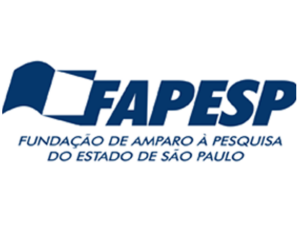Tiago R. Tavaresa, José A.M. Demattêb c, Abdul M. Mouazend, Eyal Ben-Dore, Adriano A. Anselmif, Victor Monseff de A. Camposg, Budiman Minasnyh, Sérgio H. Godinho Silvai, Sabine Chabrillatj k, Konstantinos Karyotisl, Heitor Cantarellam, Cristiano A. Andraden, Maurício R. Cherubinb c, Hudson W.P. de Carvalhoa, José Lavresa
- aCenter for Nuclear Energy in Agriculture (CENA), University of São Paulo (USP), Piracicaba, São Paulo, Brazil
- bDepartment of Soil Science, “Luiz de Queiroz” College of Agriculture, USP, Piracicaba, São Paulo, Brazil
- cCenter for Carbon Research in Tropical Agriculture (CCARBON), USP, Piracicaba, São Paulo, Brazil
- dDepartment of Environment, Faculty of Bioscience Engineering, Ghent University, Gent, Belgium
- eDepartment of Geography, Porter School of Environmental and Earth Sciences, Faculty of Exact Science, Tel Aviv University, Tel Aviv, Israel
- fBayer Crop Science, São Paulo, SP, Brazil
- g3R Ribersolo, Agricultural Analysis Laboratory, Ribeirão Preto, SP. Brazil
- hSchool of Life and Environmental Sciences & Sydney Institute of Agriculture, The University of Sydney, NSW, Australia
- iDepartment of Soil Science, Federal University of Lavras (UFLA), Lavras, Minas Gerais, Brazil
- jHelmholtz Centre for Geosciences (GFZ), Section Remote Sensing and Geoinformatic, Telegrafenberg, Potsdam, Germany
- kLeibniz University Hannover (LUH), Institute of Earth System Science, Hannover, Germany
- lSchool of Agriculture, Faculty of Agriculture, Forestry, and Natural Environment, Aristotle University of Thessaloniki, Thessaloniki, Greece
- mSoils and Environmental Resources Center, Agronomic Institute of Campinas (IAC), Campinas, São Paulo, Brazil
- nEmbrapa Meio Ambiente, Jaguariúna, São Paulo, Brazil
Abstract
Soil Spectral Libraries (SSL) and spectroscopy-based methods using varied regions of the electromagnetic spectrum for direct soil analysis are rapidly gaining traction in agricultural and environmental applications. However, the absence of standardized tests, specifically designed for these new methods, prompts concerns about performance consistency and transparency in the marketplace. This discussion paper underscores the critical factors that influence predictive performance and stresses the need for proficiency tests tailored to sensor-based techniques. It also highlights the significance of error metrics for accurate interpretation. Establishing robust proficiency tests is crucial for ensuring reliable soil analysis services and promoting the adoption of best practices in this technology.
Keywords
Analytical chemistry, Proximal soil sensing, Soil security, Soil health, Hybrid laboratory, standard and protocol







